Note by Nick Stevens
Huge thanks to Karl Dodenhoff for writing this, and for providing the excellent set of photos. As usual, click the small version to see a full size image. For consistency with the rest of the site, I’ve changed the spelling to British English.
Introduction
To start out, let me state that I am NOT an “expert” on the subject of the Soviet Union’s manned lunar space program of the 60’s and early 70’s (henceforth “the program”). I can’t quote you the operating pressure of the atmosphere inside the suit, or the names of the various material used to make it.
I became interested in the Krechet suit and the rest of the program back in the 1990’s, when information about the hardware, etc., started slowly leaking out to the west as the Soviet Union itself crumbled. Thanks to Mikhail Gorbachev and his perestroika (перестройка) policies, I first learned about their version of the Apollo Lunar Module, the Lunniy Korabl LK (Лунный корабль) or Lunar Craft. I was instantly fascinated.
Somewhat later I decided to start digging up anything and everything related to the program, which eventually brought me around to the Krechet (Кречет), or gyrfalcon spacesuit.
An internet acquaintance of mine notified me that he was in possession of several photographs of the suit because I’d already posted some photographs and diagrams of the LK. I eagerly accepted them, organized and captioned them, and posted them on my fledgling web site, My Little Space Museum. The rest is history.
The Suit
The Krechet was the lunar extravehicular (EV) spacesuit for the Soviet manned moon mission(s). The LK lander had no capability to transfer to and from the LOK (the Soviet version of the Apollo Command and Service Module) via an internal tunnel. As such, both cosmonauts for the mission were required to don their EV spacesuits. There were two versions of the same suit designed specifically for this purpose. The cosmonaut that would perform the lunar landing wore the Krechet suit. The other cosmonaut for the mission would don an Orlan suit. The main difference between the two was that the Krechet had a self-contained life support system (SCLSS) while the Orlan utilized an umbilical, which served as the electrical supply for the suits’ LSS and for communications. All other suit systems were self-contained, but it is important to make that distinction. For the transfer EVA over to the LK from the LOK, the cosmonaut who would be staying in lunar orbit assisted his crewmate, who would be performing the landing.
Anyone that knows me well knows that spacesuits are one of my favourite modelling subjects. I am currently building a scale model of the Krechet suit. All that being said, I will utilize my favourite book on the subject, titled Russian Spacesuits by Isaak P. Abramov and Ingemar Skoog. It’s an excellent reference on the subject and highly recommended. A summary of the suit’s characteristics is at the back of the book, as follows:
Semi-Rigid Lunar Suit Krechet
Official name: KRECHET and KRECHET-94 lunar spacesuits.
Krechet was an experimental spacesuit and Krechet-94 was a spacesuit for a Moon expedition as part of the N-1-L-3 program.
Description: The KRECHET spacesuit was of the semi-rigid type, with an integrated life support system (LSS). It was designed for extravehicular activity (EVA), including one on the Moon surface. The suit’s Hard Upper Torso (HUT) was integrated with the helmet and made of sheet aluminium alloy. The entry hatch was located on the HUT back. The backpack served as a hatch cover, where all the LSS components were located. The LSS was of the regenerative (closed-loop) type. The thermal control system incorporated a water-cooled garment and a heat exchanger/sublimator. The LSS controls were located on the suit chest. The suit arms and leg enclosures were of the soft type. The soft enclosure had three layers: the outer restraint layer was made of Kapron fabric and the two pressure bladders of rubber. The suit arms had shoulder and wrist bearings. A protective garment with shield vacuum thermal insulation was put over the enclosure. The antenna feeder device was set into the protective garment.
Utilization (operations): The KRECHET-94 spacesuit was designed for the N-1-L-3 program, which foresaw a crew member EVA on the Moon surface.
Development and operation dates: Development and testing: KRECHET 1966-1967 and KRECHET-94 1967-1972. Te KRECHET-94 suit activities as part of the N-1-L-3 program were suspended in 1972 and stopped in 1974. Note that the semi-rigid design was based on the experimental SKV pressure suit developed between 1962 and 1965.
Technical characteristics: The suit provided the cosmonaut with:
Operating positive pressure (main mode) of 400 hectopascals (hPa) or 5.8 psi and (additional mode) of 270 hPa or 3.9 psi;
Duration of self-contained operation for 10 hours;
Spacesuit mass, including LSS, of 106 kg. (233.6 lbs.)
A set of views of the Space Suit
Quantity of manufactured spacesuits:
KRECHET spacesuit: 3 fully functional mock-ups for laboratory testing.
KRECHET-94 spacesuit: 22 for all types of testing and training (at the time of program closure 9 more units were under production)
The proper name for the suit is “Krechet 94”. The number “94” came from the project name for their LK lunar module, which was “11F94”. The advanced backpack was also given a name: Kaspiy (Каспий) which translates to Caspian Sea.
From a historical perspective, the Krechet suit was born in June of 1960 from a directive handed down to the Zvezda (звезда) or Star design bureau titled “On creation of powerful launchers, satellites, spacecraft and space pioneering in 1960-67”. Zvezda would go on to develop and produce all the pressure suits and extravehicular space suits for the Soviet manned space program. As such, their museum is very high up on my bucket list!
The original spacesuit produced for the purpose of developing what eventually became the Krechet and Orlan extravehicular spacesuits was called the “SKV”, which is an acronym for the term “extravehicular (EVA) spacesuit” (CKB) or “внекорабельный скафандр”, which I’m not even going to attempt to write phonetically. The purpose of the suit was to develop a semi-rigid spacesuit for the L-3 moon program and (later) long term orbiting stations such as Salyut (Салют) or “Fireworks” and the top secret Almaz (Алмаз) or “Diamond” military space station. It would be the first spacesuit developed solely for use outside of the spacecraft or in extravehicular configuration.
Two key features of the SKV were revolutionary and ahead of their time in design: the entry “hatch” at the back of the suit where the backpack LSS was located, and the hard upper torso or HUT.
Requirements
The major design requirements for the original SKV suit were as follows:
Operation time of 4 hours in self-contained mode and 8 hours of life support from the mother craft (via umbilical)
Maximum spacesuit mass of 85 kg (187 lbs).
Maximum spacesuit donning time of 5-10 minutes – hence the rear entry feature
The suit had one more mandatory design feature of being compatible with the UPMK manned manoeuvring unit.
More on the UPMK here:
Operationally, once the cosmonauts donned the suits inside the Lunniy Orbitalny Korabl (Лунный Орбитальный Корабль) or Lunar Orbital Craft, from what I understand about the mission, he was trapped in it for a very long time. His major tasks then were as follows:
Do a solo EVA transfer from the LOK mother ship over to the LK lunar landing vehicle
Power up and checkout the LK
De-orbit and land the LK, by himself
Do another very dangerous solo EVA on the lunar surface
Re-enter, prep and launch the LK upper stage from the lunar surface
Achieve a stable orbit
Rendezvous and dock with the LOK
Do another solo EVA back to the safety of the LOK, with the rock box and any other lunar materials
This is a very long time to be cooped up in a spacesuit. There was a drink bag available inside the suit for times when the visor was closed and the suit pressurized, but I believe there was no ability to eat food built into the suit when it was pressurized with the visor down.
As I said on my old web site “This was a very brave cosmonaut”, and no doubt a very tired and sweaty one as well.
The operational times for the Krechet were set at 10 hours in pressurized independent mode i.e. self-contained using backpack consumables, and a total operating lifetime of 48 hours. Thermal control (cooling) was supplied via a liquid cooling garment (LCG) just like the Apollo EMU, which was also a first.
As stated previously, the Krechet suit was the first operational spacesuit designed with a hard upper torso (HUT) and an integrated hatch at the back. These were revolutionary improvements at the time, and still in use today aboard the ISS with the Russian Orlan (Οрлан) or “Sea Eagle” spacesuit. The USA adopted the HUT with the Space Shuttle extravehicular spacesuit (EMU) many years later, although they chose a different manner for donning and doffing the suit. It should be noted that the Shuttle EMU is the first American spacesuit designed solely for use outside the spacecraft.
From a model building perspective, which is one reason why I wrote this article, the Krechet and Orlan suits were both covered in a distinctive protective cloth layer made of Kapron that was a light tan colour, sometimes described as “off white”. There were bright orange stripes running up and down the length of both arms and legs of the suit. Some writers have stated that there was a metal ring “hula hoop” device attached to the backpack of the suit. The stated purpose of this was to enable the cosmonaut to roll to his side if he should accidentally fall down while on his solo EVA on the lunar surface. I personally have never seen a photo or diagram of this equipment. I believe it is a case of mistaken identity for the orange tubular device used frequently to display the suit in museums.
The Control Panel:
Details:
Besides the aforementioned control panel, there are few known details on the exterior of the suit.
In 2021 the famous auction house Sotheby’s put a Krechet suit up for sale and offered the following description:
“A Krechet-94 ("Gyrfalcon") Lunar EVA (Extra-Vehicular Activity, aka Moonwalk) Spacesuit, manufactured by NPP Zvezda, ca 1962.
Full semi-rigid one piece lunar spacesuit, approx. 72 in. tall, weighing approx. 200 lbs, supported on custom stand. Outer restraint layer made of Kapron fabric, with two pressure bladders of rubber, the whole protected by an outer garment with shield vacuum thermal insulation. Suit with flexible legs and arms, rigid torso of aluminium alloy with integrated helmet having both clear polycarbonate and protective sun visors. Backpack containing LSS (Life Support System) components, including thermal control system (water cooled garment & heat exchange / sublimator) opening with hand-controlled latch and hinge system to reveal entry hatch, LSS control panel with emblem of USSR mounted to chest.”
Suit Testing:
There is more information on testing the suit, including in simulated lunar gravity, here:
Individual Suit Elements, Photos:
The Oriel Suit
Another “soft” spacesuit, created in the traditional method without the HUT was developed concurrently with the Krechet and Orlan systems. It was called “Oriol”, or “Oрёл”. The more conventional separate backpack was called “Baikal”, or Байкал, which was analogous to the Apollo Portable Life Support System (PLSS) backpack.
Conclusion:
The Krechet suit was never flown in space. History has recorded that the Soviet manned lunar program failed primarily because their launch vehicle, the giant N-1, was poorly designed and exploded every time it was test flown. The rest of the hardware developed by the Soviets for their lunar program functioned very well in test. It was truly a shame that they never achieved a lunar landing, despite the huge expenditure spent in terms of roubles and man hours.
Karl Dodenhoff
This editions cool link:
Here’s where you can buy the Russian Space Suits book on Amazon, (no affiliate info in the link). It’s the definitive work on the subject, though photos are not the best quality.
https://www.amazon.com/Russian-Spacesuits-Springer-Praxis-Books/dp/185233732X
This editions cool visual:
A: Launch Configuration
B: Transit to the Moon
C: Transfer to the Lander
D: Separation
E: Landing, possible move to the spare lander
F: Return to the LOK
G: Leave the Moon
H: Re-entry
I: Parachutes deploy
Adapted from the book “Russian Spacesuits” by Isaac Abramov & Ingemar Skoog.
Downloadable Articles:
If you wish to support my work, you can buy downloadable PDF versions of collected articles here:
https://starbase1.gumroad.com/l/SSS-Vol1
Or you can buy my N-1 Reference Renders here:
https://starbase1.gumroad.com/l/N1-Reference
That’s all folks!






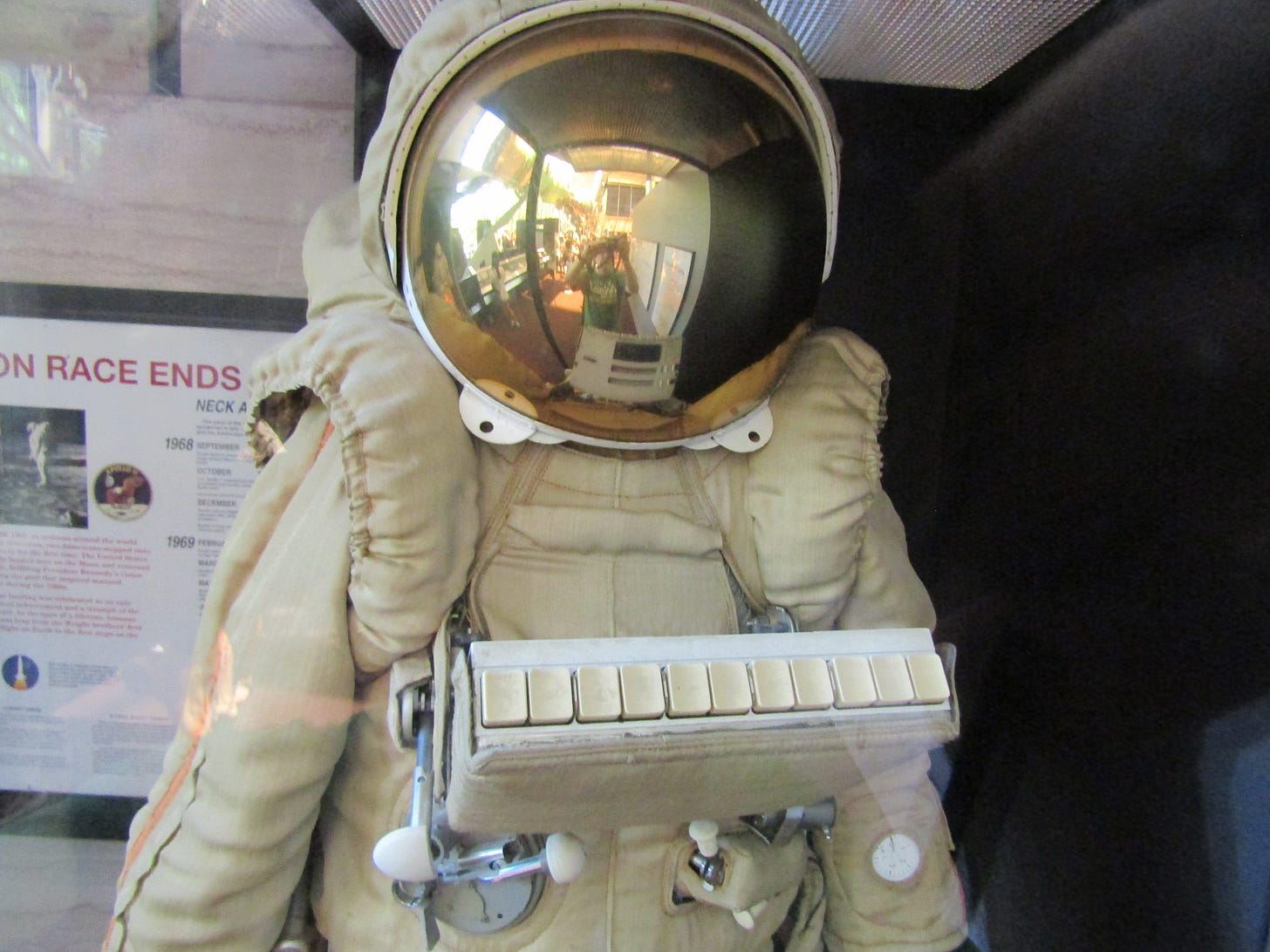
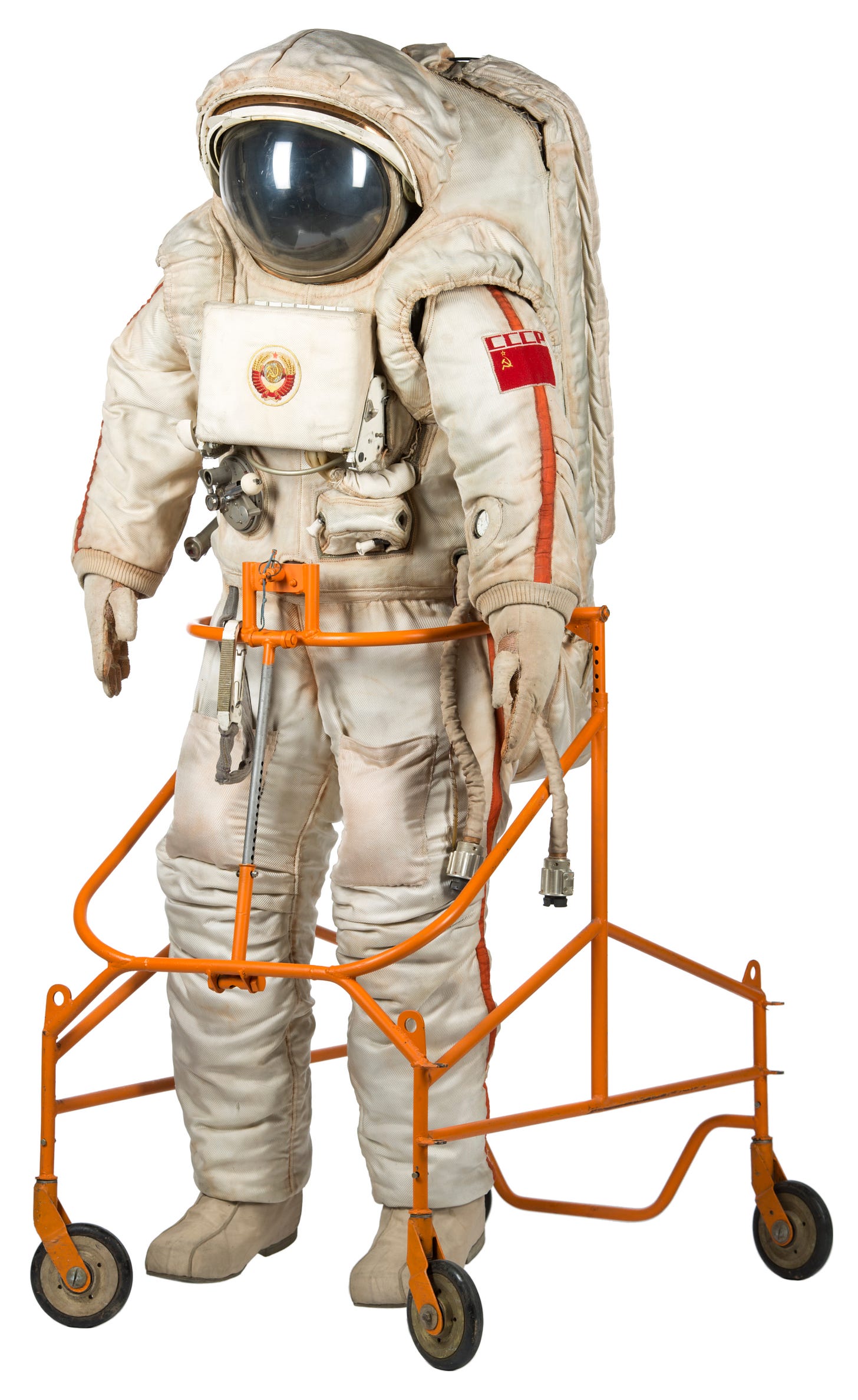
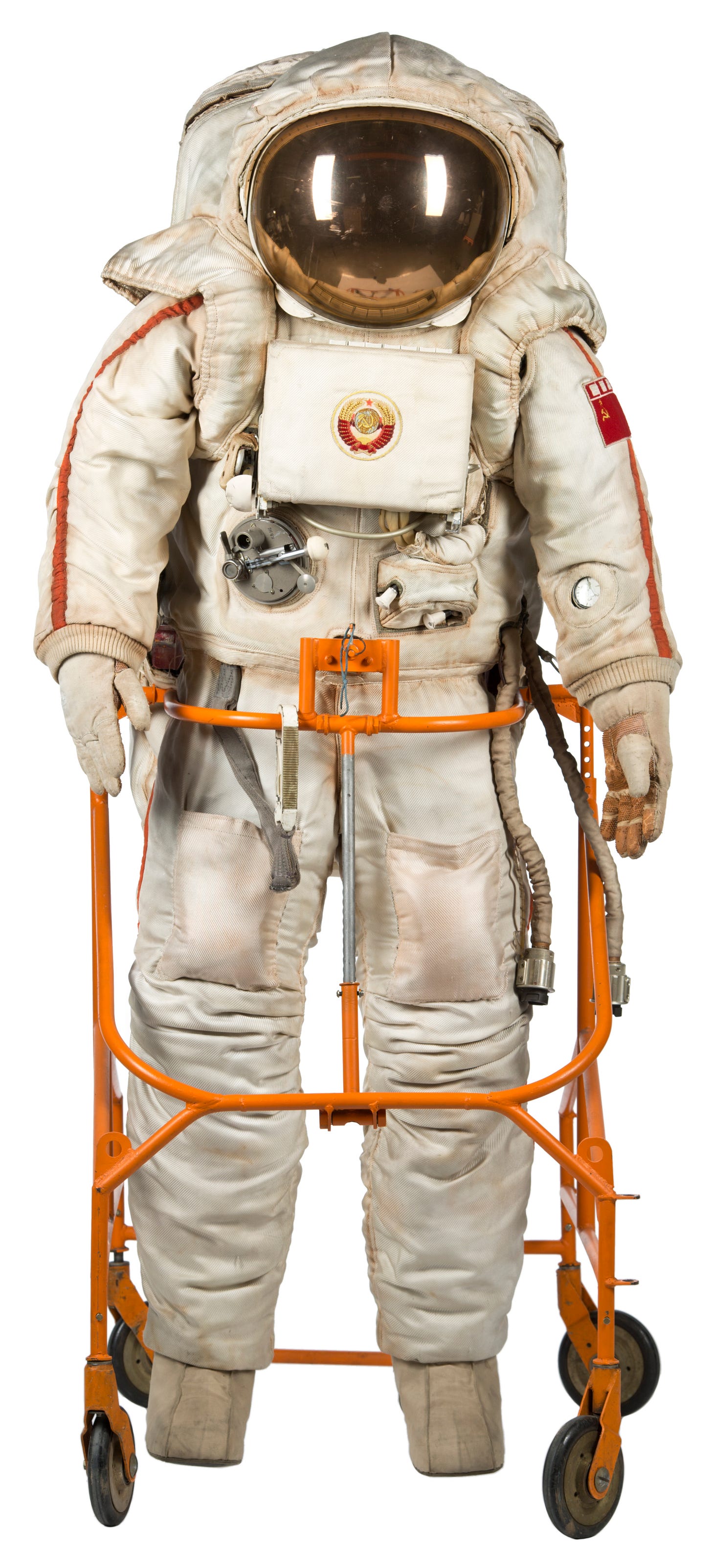





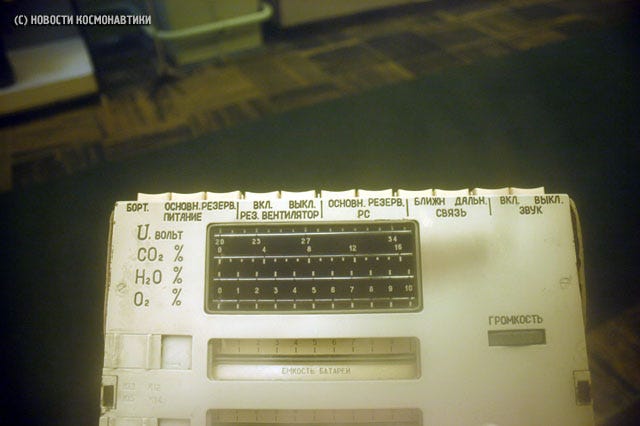

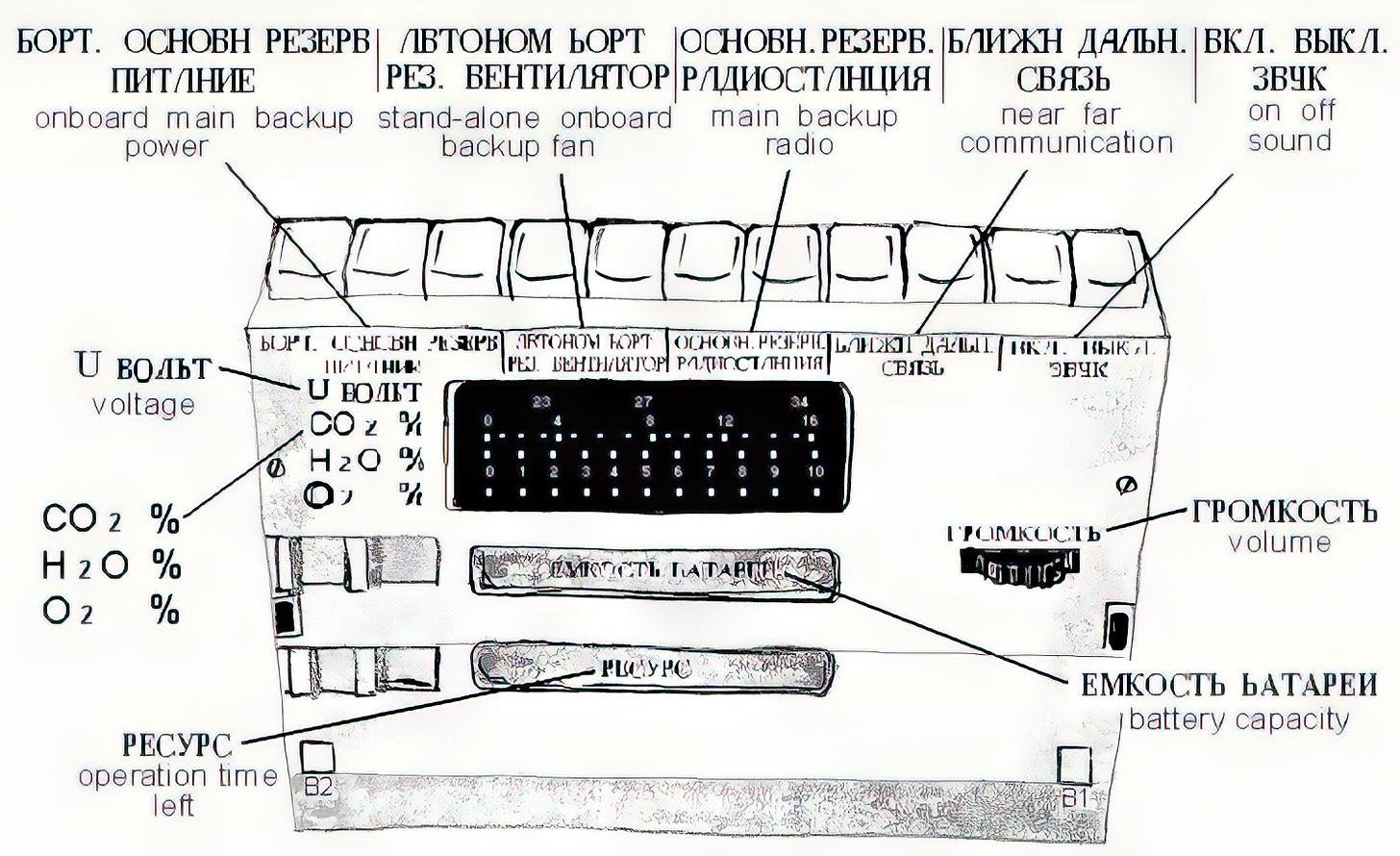


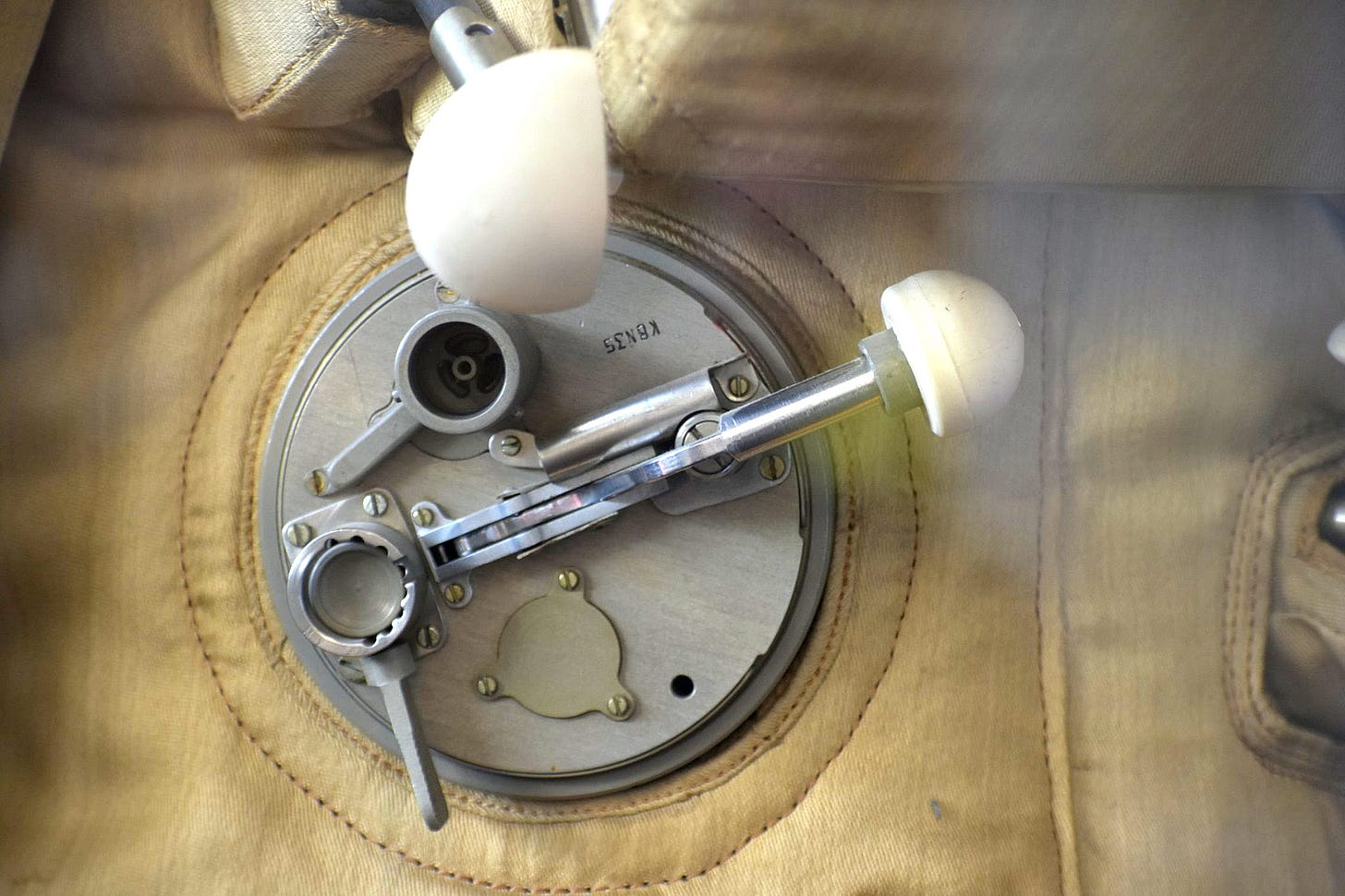
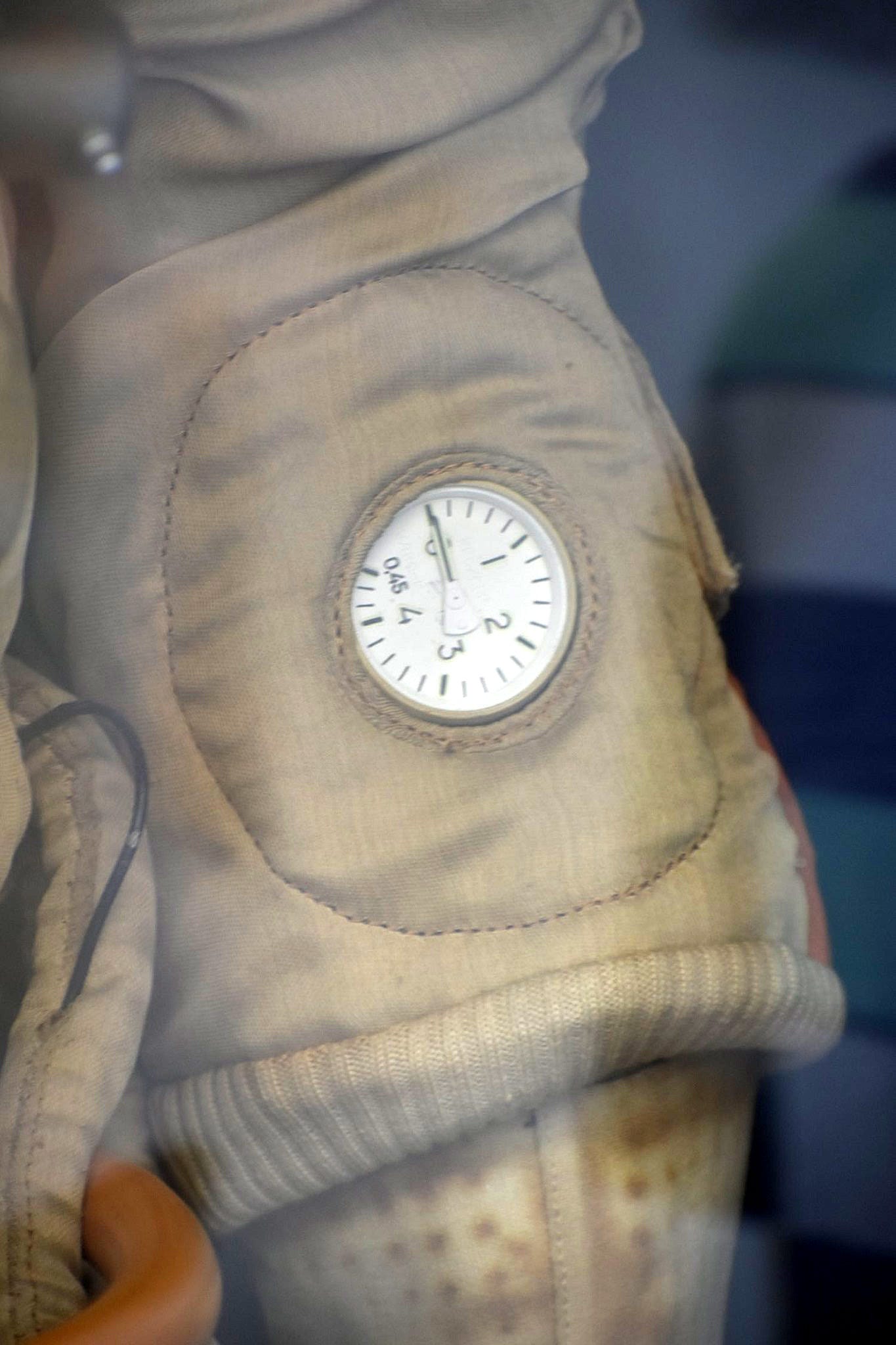



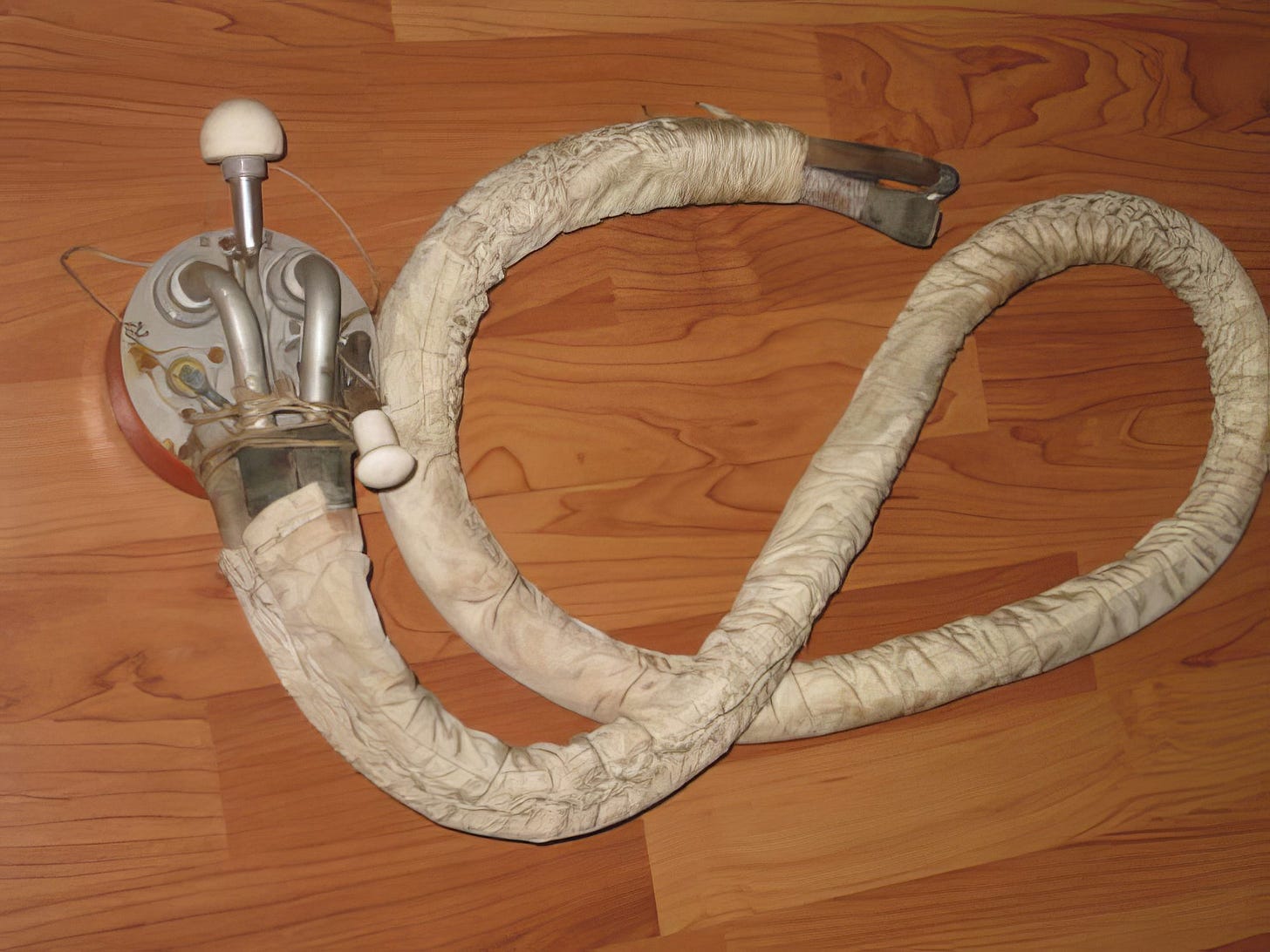
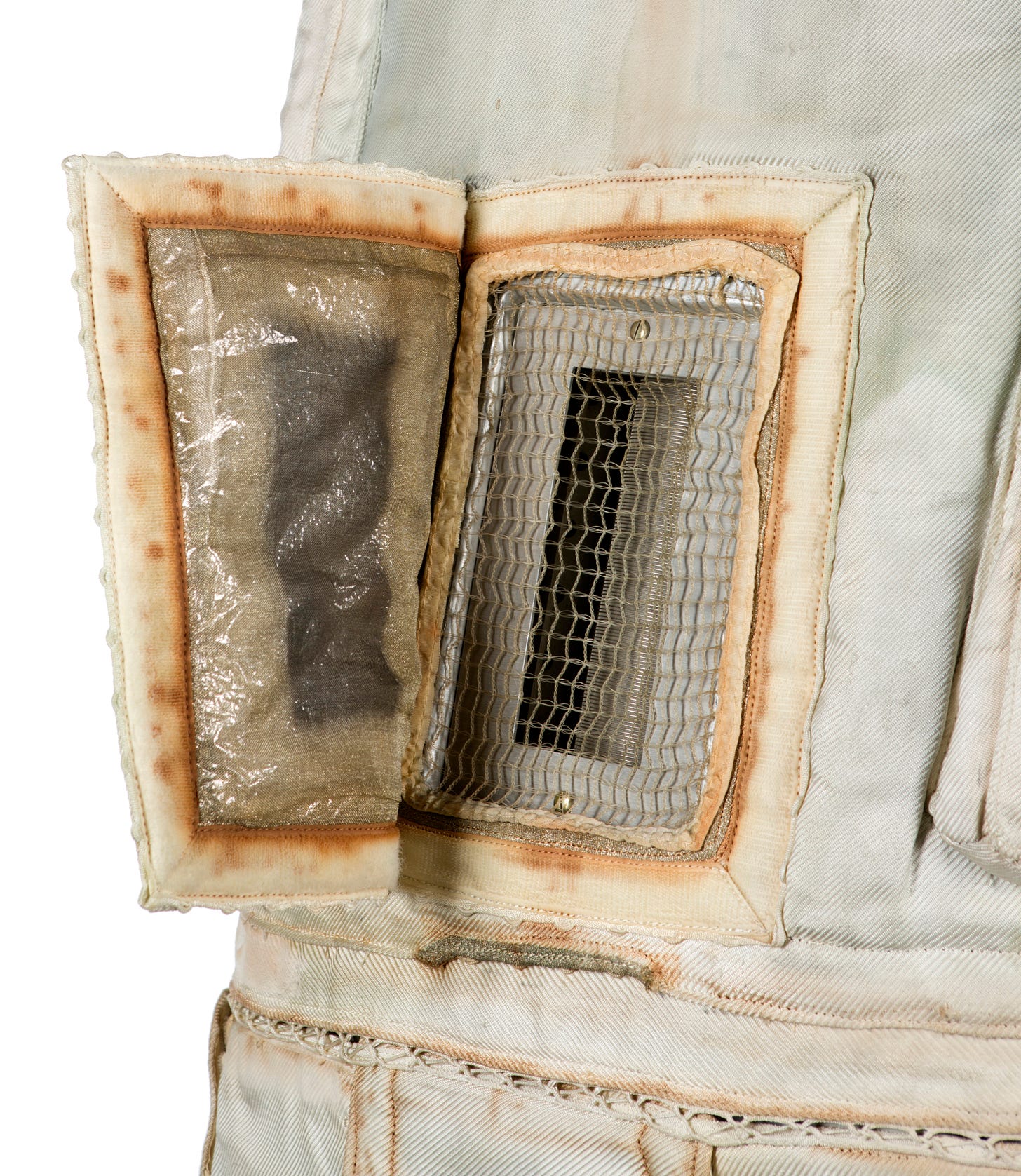
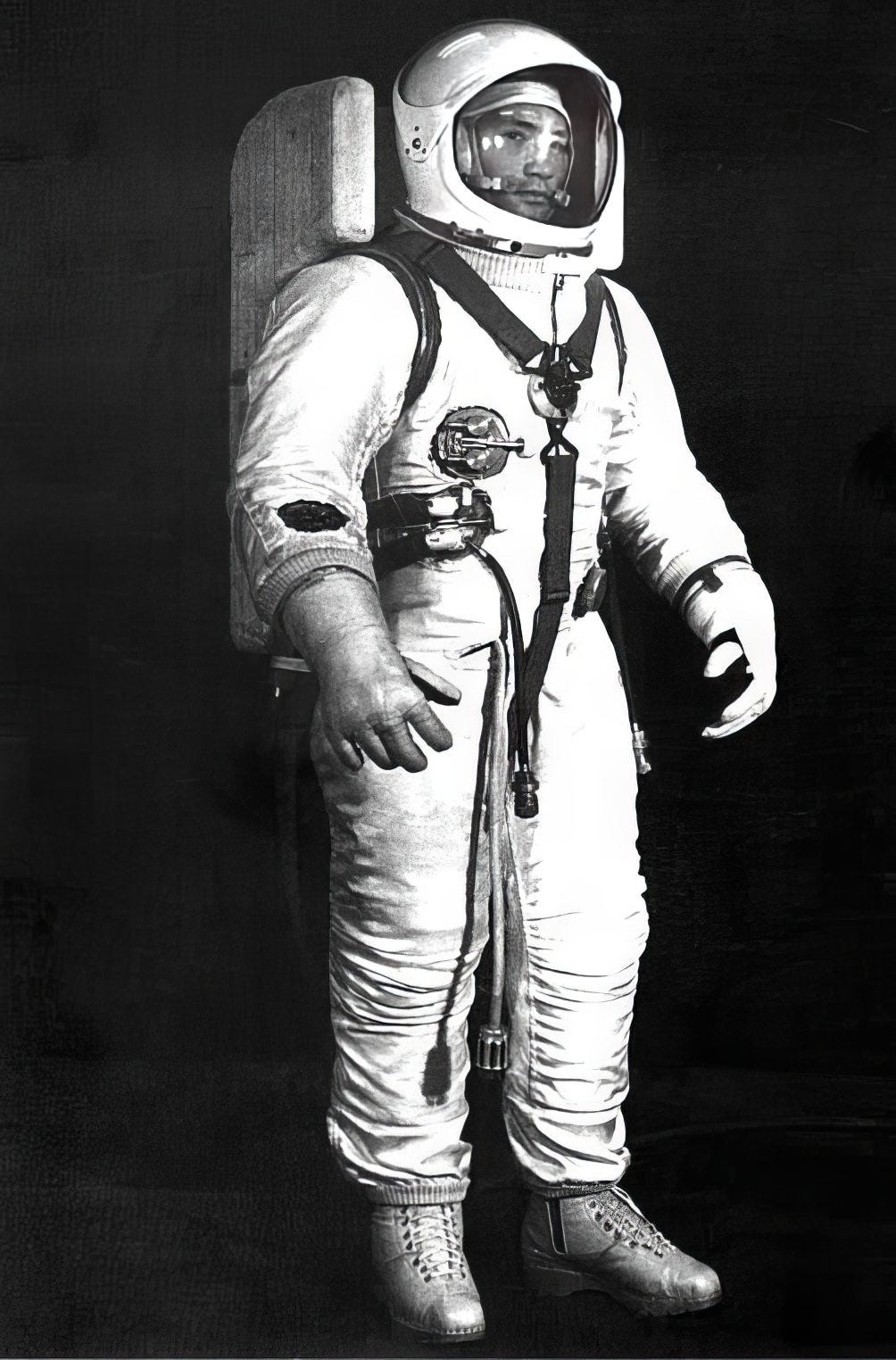
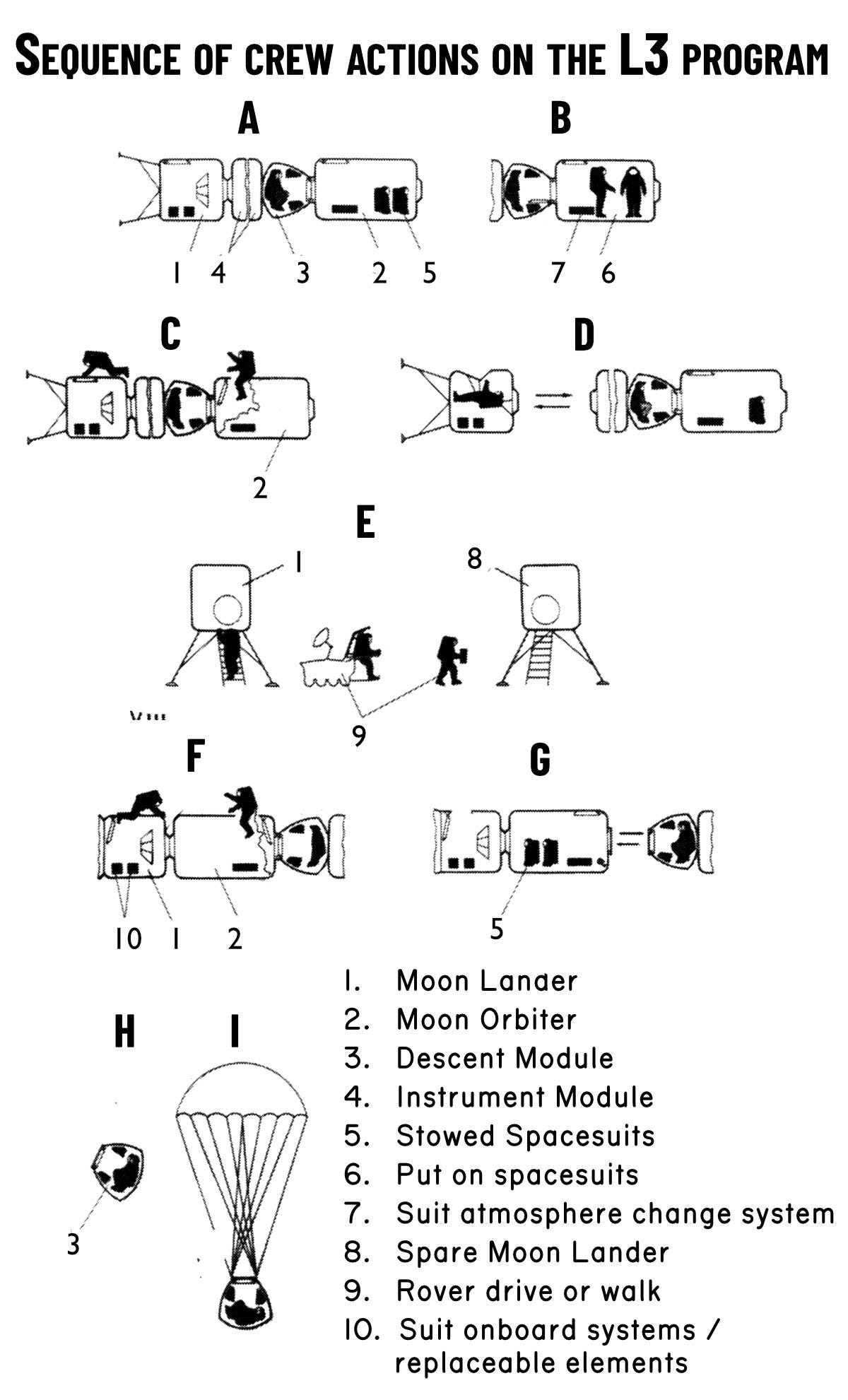

I stumbled on to a web site of a guy selling an original SKV spacesuit. This was the prototype that was used to develop the Krechet and Orlan suits. It was pretty primitive. There are several photos but they are poorly lit. It gives some appreaciation for what they were working with back then. Here's the link: https://ussrrussiansoviet.com/en/original_soviet_russian_eva_space_suit_skv_1965_lunar_program_ultra_rare_1.html
Not surprised about the winch! Would love to see the pics. The hoop seems to have been a late addition to the suit as suit No. 19 does not have the fitting but suit 23 does.